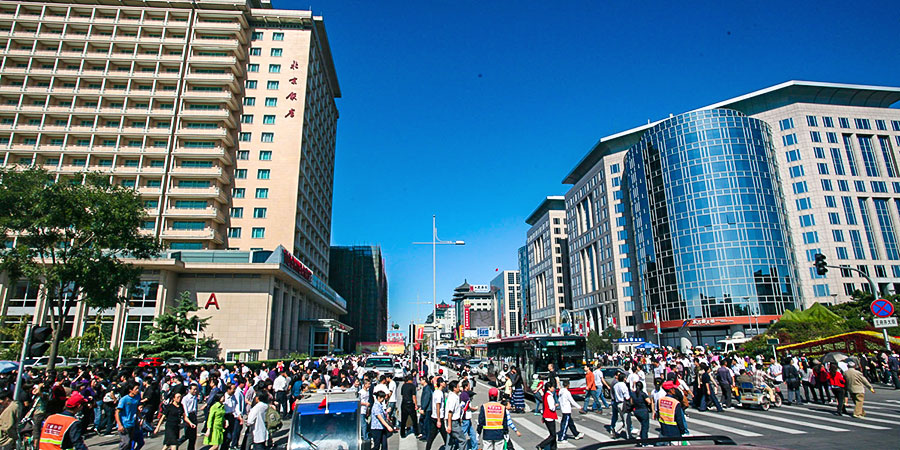Chang'an Avenue (Chang an Jie), literally "the Street of Eternal Peace", was built together with the
Forbidden City during the years from 1406 to 1420 in the
Ming Dynasty (1368-1644). It was named after Chang'an (today's
Xi'an in Shaanxi Province), a metropolis in the
Tang Dynasty (618-907).
As an axis of Beijing in the east-west direction, Chang'an Avenue in a narrow sense stretches from Dongdan to Xidan. In the past, it was referred to as the Shili Changjie, which means a long street of ten li (approximately 3.1 miles). However, in a broader sense, it runs from Tongzhou District to Shijingshan District, with an overall length of 28.6 miles (46 kilometers). The width of this street ranges from 197 to 394 feet (60 to 120 meters). Being one of the most important streets in China, Chang'an Avenue was once regarded as the longest and widest street all over the world. Having been expanded for several times, the avenue today takes on a more magnificent look. With numerous soaring skyscrapers and splendid decorative lightings, the night view of the street is a must see for all visitors.
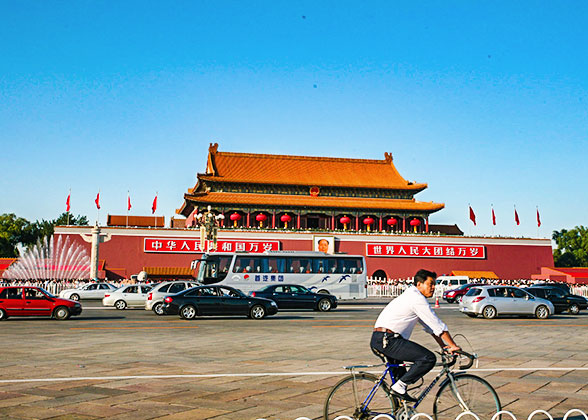 | | Tian'anmen Tower | | 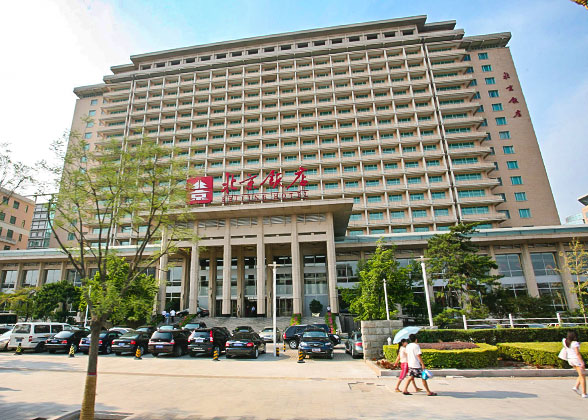 | | Beijing Hotel | |
Located along this avenue are a large number of historic sites as well as critical political buildings. The symbols of China,
Tiananmen Tower and
Tiananmen Square, stand opposite to each other on the midpoint of Chang'an Avenue, dividing the avenue into the West Chang'an Street and East Chang'an Street. Not far from Tiananmen Tower are the
Great Hall of the People,
Zhongnanhai, the Ministry of Public Security, and other agencies of the central government. Famous cultural facilities, such as the
National Museum of China, the Forbidden City,
Zhongshan Park,
Working Peoples's Cultural Palace,
National Center for the Performing Arts, and Beijing Concert Hall, are dotted on both sides of the avenue. Beijing's major commercial streets, like
Wangfujing,
Xidan, and Dongdan, are scattered along Chang'an Avenue. In addition,
Beijing Railway Station and
West Railway Station are situated near this street, making it easily accessible.
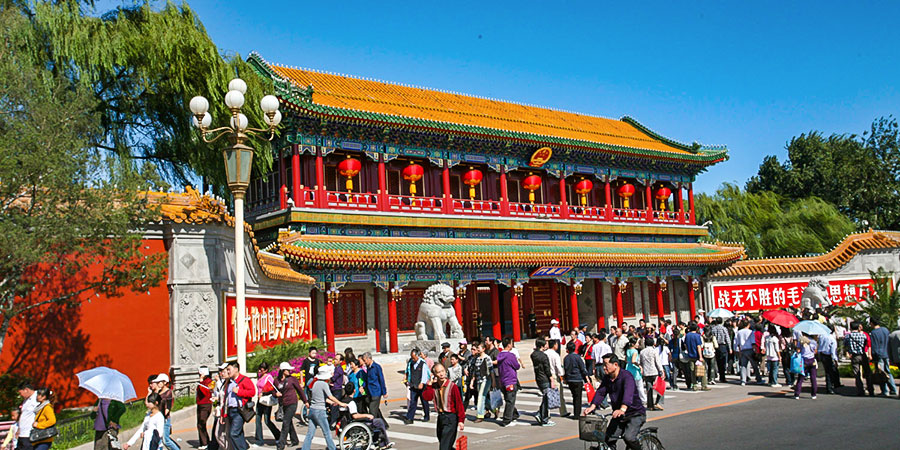 |
| Xinhua Gate of Zhongnanhai |
Because of its political significance, Chang'an Avenue is often associated with many historical events. Whenever there is an event to be held there, the avenue will be decorated elaborately. It has witnessed the founding ceremony of the People's Republic of China in 1949. Later in 1976, thousands of Beijing civilians sent the hearse of the former premier Zhou Enlai off on this street after he passed away. Besides, the street is where military parades are conducted. In recent decades, the military parade generally took place once in ten years, falling on October 1st, the
National Day of China. On that day, the orderly parading procession marches from east to west along the avenue, passing before Tiananmen Tower, to celebrate the founding of PRC and demonstrate the developing military power to the whole world. On September 3rd, 2015, a special military parade was held along this street to commemorate the 70th anniversary of the victory in World Anti-Fascist War as well as Chinese Anti-Japanese War.
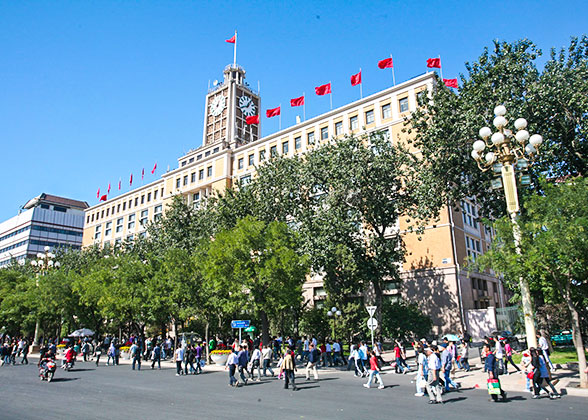 | | Telegram Building on West Chang'an Avenue | | 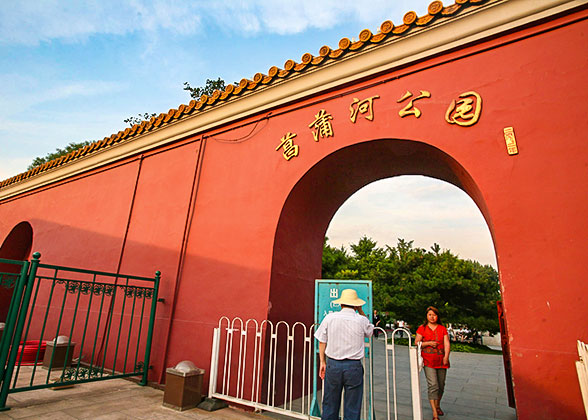 | | Changpu River Park | |
How to get to Chang'an Avenue
Subway Line 1 runs under the Chang'an Avenue, with stations including Xidan, Tiananmen West, Tiananmen East, Wangfujing, and Dongdan. You can also take
Subway Line 4 to Xidan or
Line 5 to Dongdan.
- Last updated on Aug. 20, 2024 by Gabby Li -
